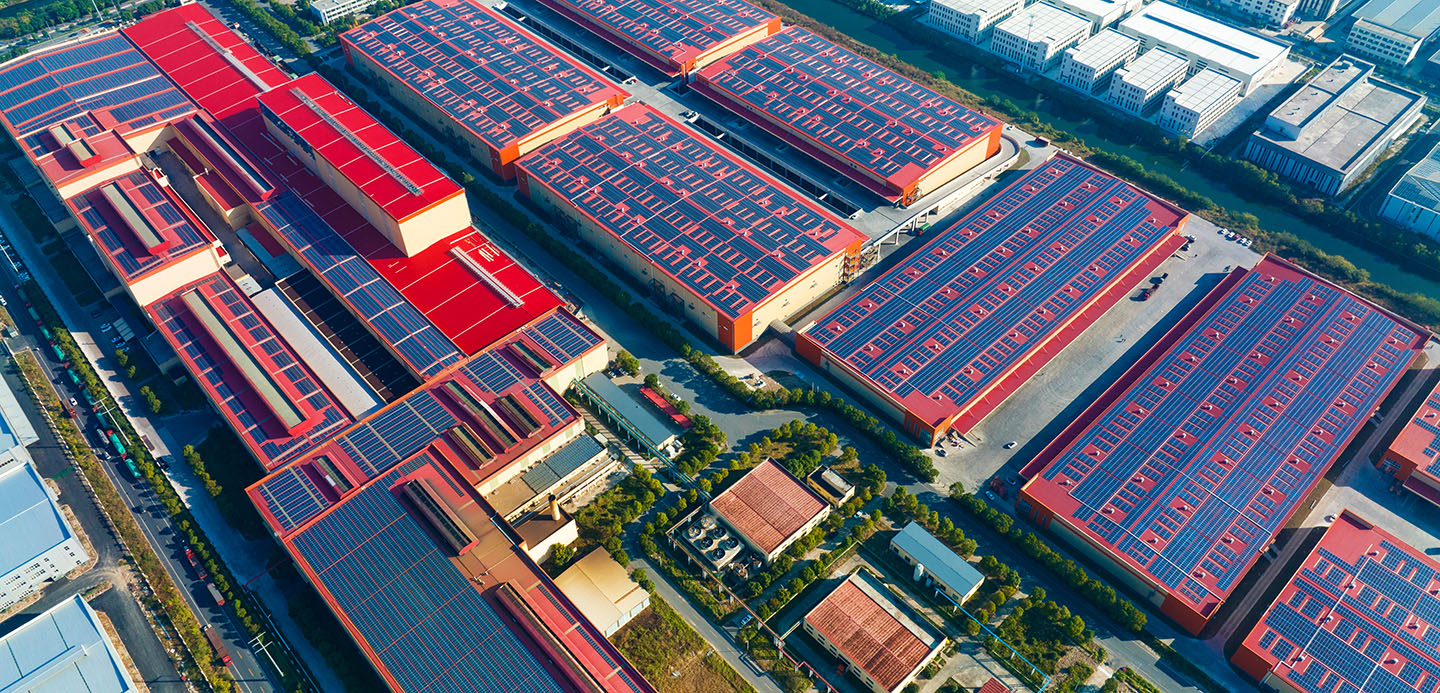- Article

- Infrastructure and Sustainable Finance
- The Future of Work
- The Future of Energy
Data centres – clean energy’s unlikely accelerators?
Data centres have increasingly large appetites for electricity as they rise in size and number. But could their hunger help accelerate clean energy and electricity grid solutions?
Key takeaways
Data centre power consumption will double soon
By 2026, the share of global electricity consumed by data centres will have doubled from 2% to 4% in just four years.¹ Power generation capacity will need to continue rising to account for this, or the risk of power outages may increase.This demand could help catalyse broader energy production
With careful planning, countries can use the power needs of their artificial intelligence (AI) industries to ramp up clean energy production, support electricity grid services, and innovate new heating solutions.Electrical grid supply chains need upgrading
The electricity grid requires upgrading and expansion to account for the growth in renewables and additional electricity demand, including that from data centres. This will require additional suppliers to relieve bottlenecks in the supply chain, such as transformers and electrical cables, as the manufacturers cannot keep up with demand. The supply chain needs to innovate and expand to cope with rising demand.
Plans by the world’s largest technology corporations to rapidly upscale artificial intelligence (AI) will require large increases in electricity generation. But according to data centre and energy experts speaking at a panel discussion during this year’s London Climate Action Week, meeting this need requires better access to the grid and firm clean power resources.
But energy provision is an opportunity as well as a challenge. By working together on solutions, project developers and finance providers are able to help catalyse clean energy infrastructure and electricity grid improvements.
Martin Richards, Global Head of Climate Tech at HSBC, set the scene for the potential symbiotic relationship between AI and energy as he introduced the ‘Powering the Future: Navigating Global Pathways’ discussion on 26 June.
As Richards noted, the growing energy appetite of the data centres that are needed to support AI means they will be influential players in the evolution of the world’s power sector. “AI will be a big driver in what happens to energy systems across the globe,” he told the audience.
Energy gluttons
According to Kim Zou, the Founder and Chief Executive Officer of Sightline, an energy transition market intelligence company, the energy appetite of data centres is growing because data centres themselves are getting bigger.
“Historically, the average size of a data centre by annual power consumption was 10 to 20 megawatts (MW), but now it’s 300MW and some are as big as three gigawatts,” she said.
Data centres consumed 460 terawatt-hours of power in 20222, about 2% of global electricity consumption, but they are expected to need double this amount by 20263.
This rising energy need has raised concerns about the ability of electricity grids and energy systems to cope. Randolph Brazier, Global Head of Clean Power Systems at HSBC, noted that a key issue was that data centres required a lot of energy to be delivered to one place.
“Data centres are very large point sources of demand, especially as they go from megawatts to gigawatts,” he said. “Today, the grid is not designed for that.”
Opportunities at hand
To quickly meet their energy consumption needs, new data centres are typically set up in sites with a good existing connection to the electricity grid or enough open land to build on-site generation.
The largest AI companies, popularly known as hyperscalers, have earmarked billions of dollars to clean power sources to help meet their power needs. Renewables like solar and wind power are often the fastest and cheapest way of delivering additional energy at these sites.
They’re also exploring new technologies such as advanced geothermal and new nuclear power solutions. Technology companies Meta4 and Amazon5 are among the companies to have agreed to develop new small modular nuclear reactors (SMRs). Google is also pursuing new carbon-free power for its data centres. It formed an alliance in 2024 to develop new industrial parks powered by gigawatts of new clean energy6,7.
Reusing infrastructure
Alongside building new facilities, data centre operators are looking to repurpose former fossil fuel plants to take advantage of existing grid connections that greenfield sites can wait years to receive.
“53GW of coal plant energy output is expected to retire in Europe; those sites already have grid interconnection,” said Zou. “Lots of property developers are looking at coal and industrial sites to build data centres.”
Microsoft, for example, is redeveloping two former coal plants in Yorkshire in the UK and has taken a similar approach with nuclear power in the US, signing an agreement in 2024 to reopen a nuclear power plant in Pennsylvania by 2027 or 20288.
New innovations
The panellists agreed that the likely surge in electricity demand should encourage developments in power-purchase agreements and incentivise more power market services and market startups.
The large sums being earmarked for investment into data centres may also encourage economies of scale, innovation and research and development into energy efficiency and alternative sources of energy, potentially leading to data centres becoming less energy intensive.
There are also opportunities to support the wider ecosystem around a data centre. For example, data centre builders and operators such as DeepGreen are shifting the waste heat generated by data centres into district heating systems, industrial facilities and even neighbouring swimming pools9. In this way, such projects are able to support the energy needs of their local community, offering an additional source of heat generation as well as reducing reliance on fossil fuels.
This illustrates how thinking creatively about how to solve one problem can be critical to helping solve for a broader range of community and societal needs. At HSBC, we are well-placed to bring both the capital, and the client connections needed to help such solutions reach their potential.
Grid upgrades
Alongside the electrification of heat and transport, adding data centres to electricity grids will require electricity grid investment, as well as investment in the supply chain, for example cables and transformers. These are typically large CAPEX investments with long timelines; introducing another bottleneck.
“You need to upgrade the grid to account for large new sources of demand,” said Brazier. “Grid upgrades can present big time delays for data centre projects. For example, new power lines can take 10 to 15 years overall, with most of the time associated with planning and permitting, whereas the actual construction might only take two to three years."
Existing grid equipment manufacturers are extremely busy. Brazier noted that the order books of certain manufacturers were full for the next six to seven years. “We need to grow and expand existing manufacturers while bringing in new players to meet this demand,” he said, adding: “I think there’s a lot to do in the supply chain to expand it as well as making more efficient and better products.”
Another challenge is the fact that wind and solar power are intermittent sources of electricity. However, this can be overcome through increased battery storage, using new sources of clean electricity such as nuclear or geothermal and more precisely managing electricity demand.
AI’s acceleration
Speakers agreed it was not a matter of ‘if’ but ‘when’ data centres’ surging energy needs would be met. Whilst it might take years to achieve this goal, the speakers pointed to hyperscalers’ determination to succeed driven by their profound conviction that demand for AI would continue to surge over the coming decade.
Hyperscalers and tech companies are at the forefront of the energy transition as they require clean electricity to meet their vast thirst for electricity. These players are underwriting development of renewable capacity and battery storage, at a scale and pace never seen before. But the challenge of energy demand will not be solved by one company, and investment in the electricity grid and new technologies is crucial.
“What excites me the most is that we’re not only funding and supporting the development of new technologies, but we’ve come to the point now where we’re really helping to scale existing technologies,” said Richards. “I think this is the beginning of a great journey to help decarbonise the grid.”
1 International Energy Agency, Electricity 2024
2 International Energy Agency, Electricity 2024
3 International Energy Agency, Electricity 2024
4 Reuters, Meta seeks nuclear power developers for reactors to start in early 2030s (December, 2024)
5 Environment Energy Leader, Amazon Announces Major Investment in Small Modular Nuclear Reactor (October 2024)
6 Google, A new approach to data center and clean energy approach (December 2024)
7 The Register, Google thinks the grid can’t support AI, so it’s spending on solar for future datacenters (December 2024)
8 Reuters, Three Mile Island nuclear plant reboot fast-tracked to 2027 (June, 2025)
9 The Guardian, Energy from data centres could heat UK swimming pools after green investment (January, 2024)
Further insights



